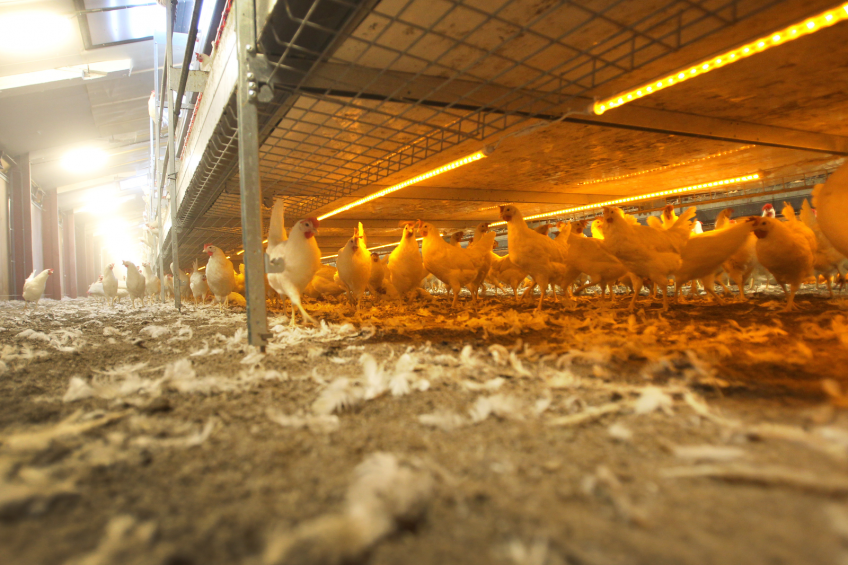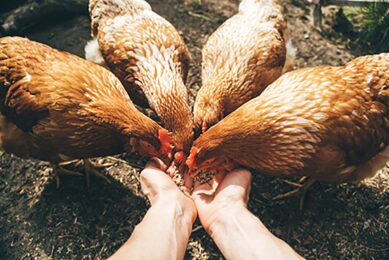No detrimental effects on broilers from LED lighting

A study by Scotland’s Rural College (SRUC) into the effects of LED lighting on broiler chickens has found that there were no detrimental effects in comparison to more traditional tungsten lighting.
The small study was carried out by researchers from Scotland’s Rural College, in conjunction with lighting manufacturers KEW LEDs. It was funded by a grant from the government’s Innovate UK Technology Strategy Board.
Effects on livestock unknown
Tungsten (and fluorescent) lights are being superseded by more efficient technology such as low-emitting diodes (LEDs), however their effects on livestock are unknown. Researchers investigated if there were major differences in broiler performance and welfare under 4000K cool, 3000K warm, and 3500K plain (‘neutral’) white LEDs (LC, LW, LN respectively) or tungsten incandescent (T) lighting.
More comfort behaviours
According to Dr Victoria Sandilands, Senior Behaviour and Welfare Scientist with SRUC’s Avian Science Centre:
“Birds exposed to LED lights showed more comfort behaviours (4.4%) such as preening and dustbathing than birds under tungsten lighting (2.9%), whereas tungsten birds sat slightly more (75.6%) than LED birds (72.5%). This might be viewed as a positive outcome of LED lights as they appear to promote positive behaviour and less inactivity.”
Hock and foot pad lesions remained low
As can be seen in the accompanying graph below, body weights were not significantly affected by lighting treatment at any age, neither was food conversion ratio. Hock and foot pad lesions remained low throughout the study, and lighting appeared to have no affect. Gait scores (an indicator of how well a chicken can walk) gradually worsened with bird age as expected, but also without apparent lighting effects.












